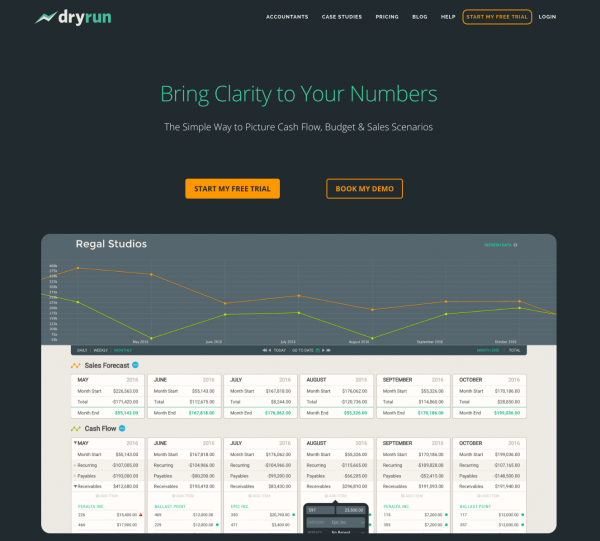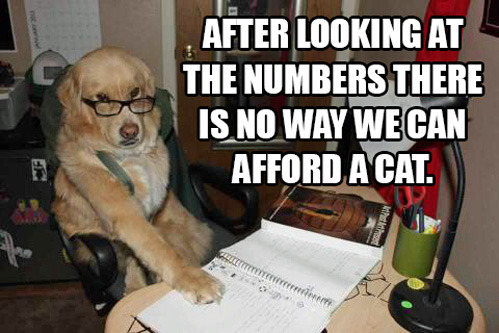Managing Your Finances Using a Cash Flow Spreadsheet
Learn a few simple tools to help get a clear understanding of where your money is now, and what the future looks like.

I am a little obsessive about keeping on top of our finances. I look at our business cash flow spreadsheet and bank accounts nearly every day. I can tell you at any given time our cash runway, expected monthly revenue and expenses, and the general health of the business. I can do the same for our personal finances. For those that know me, this probably isn’t that shocking since it fits in with my orderly/control-freak nature. That said, I wasn’t born knowing how to do this and it wasn’t something that I was taught by my parents or in school. I had to learn it over time through trial, error, and many internet searches. In this post, I will share some of the tools that I have come across, as well as a template that you can use as a starting point for your own cash flow spreadsheet.

We have all heard a million times the adage, “Cash is King”. As people who have to do adult things like pay bills and buy groceries, or as entrepreneurs that have to build businesses, knowing how much money you have is pretty darn important. It could be argued it is even more important to be able to predict how much money you will have in the future, given certain circumstances.
Beyond bank balances
I think financial literacy, even on the most basic of levels, is a skill that is vitally important to future success. However, it is one that many people shy away from, either due to fear, or just a lack of exposure to the knowledge. Financial management, both from our families or in secondary or postsecondary, is not often part of our educations. It is reasonable that many people wouldn’t even know where to begin building a cash flow spreadsheet or making cash flow projections.
Many people rely on their bookkeepers or accountants for such knowledge, and should. That said, it is also valuable to have a finger on the day-to-day pulse of your personal and professional finances. It helps you make informed decisions about things like:
- How much should you be putting towards debt repayment?
- How fast can you save up for a family vacation?
- What is the best way to pay for an unexpected expense?
- Can you afford to hire a new employee?
- How long is your cash runway?
- etc.
Just knowing your account balances is not enough to be able to answer these questions. For businesses, you will also need to have this information easily available to provide to a bank should you ever want to apply for any type of loan. You should be able to have a clear understanding of where your finances stand at any given time.
Build a simple cash flow spreadsheet using this template

One of the best ways to keep yourself in the know about your finances is to create a cash flow spreadsheet that you update and look at on a regular basis. Instead of starting from scratch, there are many templates out there that give you a good starting point. You can do a Google search and get a huge list of options, which might be a bit overwhelming (I know it was for me). Instead, check out the one I use and see if it might be a good fit for you:
CASH FLOW SPREADSHEET TEMPLATE
I have adapted this spreadsheet over time to work well specifically for my business, and I have a version of it that I use to manage our personal finances.
WHAT YOU NEED TO KNOW TO FILL THE CASH FLOW SPREADSHEET:
- Revenue sources
- Salary costs, including payroll deductions
- Subcontractor costs
- Recurring monthly chequing expenses – Examples: Office lease, insurance, parking, tax instalments
- Recurring monthly credit card expenses – Examples: Software licenses,
- One time/annual expenses – Examples: Business license, accountant fees, lawyer fees
You can access much of this information through your accounting software. For directions specifically around cash flow reports, you can find directions on Quickbooks and Xero.
This list focuses on a cash flow spreadsheet for a service business. It can easily be adapted for other business models (like ones that need to include material costs) or a personal cash flow spreadsheet as well. If you have the above information handy, you can fill out the template I provided and get started.
WHEN TO UPDATE THE CASH FLOW SPREADSHEET:
You should update the cash flow spreadsheet whenever you have any money coming in or going out that isn’t already accounted for. For example:
- When you have a new project or contract approved.
- When you are aware of an upcoming expense like new hardware or office furniture.
- When you have a new employee starting or leaving.
- When you have a project delay that results in payment delays.
You should also be looking at your cash flow spreadsheet at least once a week. It provides vital information so you can make decisive and well-informed decisions based on accessible and accurate data.
Online financial forecasting tool – DryRun

In addition to having your cash flow spreadsheet handy, there are also online tools that you can access that will help with scenario projections.
For example, you have three large client contracts out and are waiting to hear back on which ones are going ahead. Depending on which contracts go ahead, you are considering hiring another employee but want to make sure you can afford it. You want to compare what your financial status will be if you get none, one, two, or all three contracts. While you can figure this out on your own using a spreadsheet, it can be challenging if it is not really your forte. Instead, one of the best tools that I have come across was built by a friend and colleague of ours, Blaine Bertsch, called Dryrun. You can enter each of the relevant scenarios into Dryrun and create projections. In the example I gave, it would help you decide which circumstances you can afford to hire another employee.
When in doubt, ask an expert

The financial side of a business, and even dealing with your personal finances, can be a lot to manage. There will be complexities that you might not be able to capture in the template I provided or specific reports that you are not sure how to put together. In those cases, it is always a good idea to speak to your bookkeeper, accountant or financial advisor. These people manage money for a living and will be able to point you in the right direction. In fact, one of the pieces of advice that I have heard over and over again in my various mentorship groups is to have a good relationship with your accountant and financial advisor.
You should speak to them regularly and make sure they know who you are when you call them for help. They will be the ones that help you with loan applications or provide guidance on making investments or significant purchases. They will also help with those seemingly simple questions you are not sure how to answer. If they don’t know you, or only look at your account when it is time to file your taxes, it makes it harder for them to give you good advice.
Summary
Having a strong handle on your finances helps you make educated and informed decisions for your family and for your business. Take a step beyond having a fuzzy idea of your account balance and bills and instead, try the template I provided to get a clear view of where your money is at. If you have some bigger decisions to make depending on a number of different outcomes, you can take it a step further and try Dryrun. It can help you see which direction to go, depending on the circumstances. Beyond the cash flow spreadsheet and online tools, make sure you have a good relationship with your accountant and financial advisor so that when you reach out to them they are able to give you informed advice. A little effort every day into your cash flow will make a big difference in keeping you on the up and up of your business and personal finances.
Share
Ashley Janssen

Productivity consultant, writer, speaker, serial entrepreneur, chaos calmer, introvert, cat-lady. Lover of books, fitness, old fashioned’s, basketball, and video games.
Follow me on
Twitter
or
LinkedIn.
Hire me for
1 on 1 productivity consulting
or
speaking.
Related articles

9 Ways to Get More Out of Networking by Being Intentional

How to Develop the Skill of Asking for Help


Comments ()